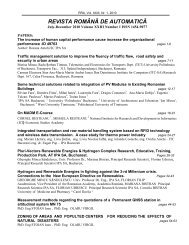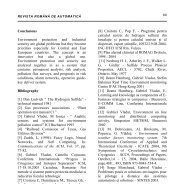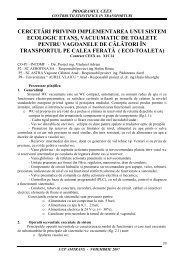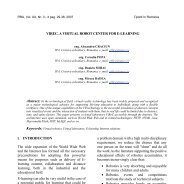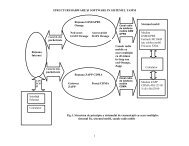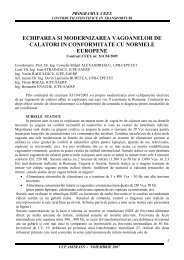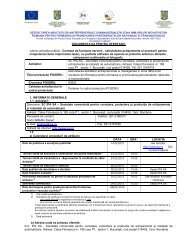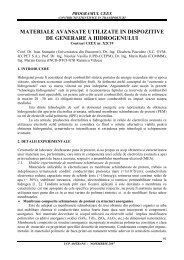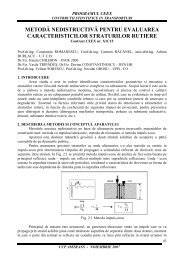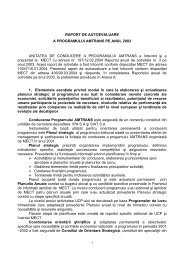REVISTA ROMÃNÄ DE AUTOMATICÄ - IPA SA
REVISTA ROMÃNÄ DE AUTOMATICÄ - IPA SA
REVISTA ROMÃNÄ DE AUTOMATICÄ - IPA SA
Create successful ePaper yourself
Turn your PDF publications into a flip-book with our unique Google optimized e-Paper software.
<strong>REVISTA</strong> ROMÂNĂ <strong>DE</strong> AUTOMATICĂ<br />
17<br />
processes that they are designed to support.<br />
The Semantic Web reaches stability in its<br />
lower layers with the existence of standards<br />
and the upcoming availability of basic<br />
technologies and trialed applications. Still,<br />
the success of the Semantic Web depends on<br />
its capability to deploy in a commercial<br />
setting.<br />
VII. CONCLUSION<br />
Views on the next stage of the World Wide<br />
Web's evolution vary greatly. Some believe that<br />
emerging technologies such as the Semantic<br />
Web will transform the way the Web is used,<br />
and lead to new possibilities in artificial<br />
intelligence. Other visionaries suggest that<br />
increases in Internet connection speeds, modular<br />
web applications, or advances in computer<br />
graphics will play the key role in the evolution<br />
of the World Wide Web.<br />
In this article, you went through the core<br />
standards that make up the Semantic Web's<br />
technologies and learned why organizations<br />
might want to adopt those technologies. With<br />
Semantic Web technologies, organizations<br />
can provide a single, unified view of data<br />
across their applications, which allows for<br />
precise retrieval of information, simplifies<br />
enterprise and SOA integration, reduces data<br />
redundancy, and provides uniform semantic<br />
meaning across applications. All this eases<br />
development, maintenance, and upgrades<br />
across the enterprise.<br />
REFERENCES<br />
[1] Michael C. Daconta, Leo J. Obrst and<br />
Kevin T. Smith, The Semantic Web: A<br />
Guide to the Future of XML, Web<br />
Services, and Knowledge Management ,<br />
ISBN: 0471432571 John Wiley & Sons<br />
© 2003 (281 pages)<br />
[2] Naveen Balani, Ontologies form the<br />
backbone of a whole new way to<br />
understand online data, Technical<br />
Architect, Webify Solutions 18 Oct 2005<br />
[3] Lee Feigenbaum, Ivan Herman, Tonya<br />
Hongsermeier, Eric Neumann and<br />
Susie Stephens, The Semantic Web in<br />
Action; December 2007; Scientific<br />
American Magazine;<br />
[4] The Future WEB, ERCIM News, No.<br />
72, January 2008<br />
[5] *** http://www.w3.org/2001/sw/<br />
[6] ***<br />
http://www.waset.org/pwaset/v18/v18-<br />
24.pdf<br />
[7] Tim Berners-Lee, Weaving the Web,<br />
Harper San Francisco, 1999<br />
[8] Dr. Roberto García, Semantic Web<br />
Methodologies for E-Business<br />
Applications: Ontologies, Processes and<br />
Management Practices, edited by,<br />
Universitat de Lleida, Spain<br />
[9] A. F. Salam, Jason R. Steven, Semantic<br />
Web Technologies and E-Business:<br />
Toward the Integrated Virtual<br />
Organization and Business Process<br />
Automation (Hardcover)<br />
[10] James Hendler, Tim Berners-Lee, and<br />
Eric Miller, "Integrating Applications<br />
on the Semantic Web"<br />
AR4-3.doc



